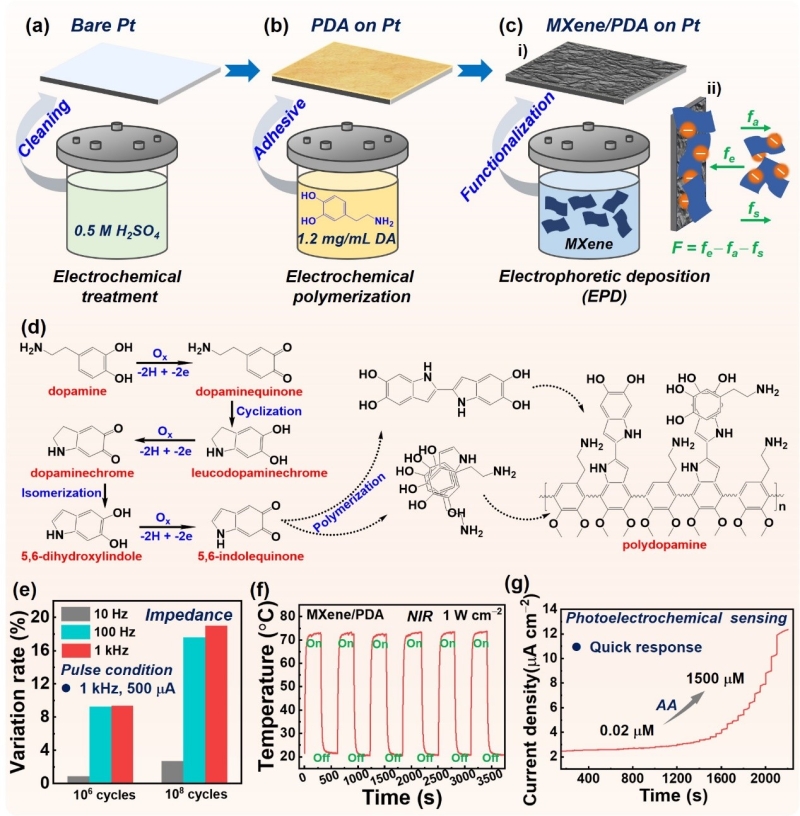Researchers Develop High-Performance MXene/Polydopamine Bioelectrodes, Paving the Way for Cost-Effective Bioelectronics
Date:06-03-2024 | 【Print】 【close】
The ideal bioelectronic interfaces typically necessitate bioelectrodes that fulfill practical requirements, including low interface impedance, exceptional long-term stability, and biosafety.
However, the utilization of traditional materials (typically noble metals) and manufacturing techniques presents limitations on the large-scale production of bioelectrodes.
A research team led by Prof. ZHANG Yi from the Shenzhen Institute of Advanced Technology (SIAT) of the Chinese Academy of Sciences collaborated with Prof. PENG Zhengchun from Shenzhen University, has developed a low-cost, mild in-situ preparation method for obtaining a stable and reliable MXene composite bioelectrode on a metal substrate, which operates at room temperature and pressure, low voltage, and enables rapid deposition.
The study was published in Advanced Functional Materials on February 14.
In this study, the researchers developed a facile two-step electrochemical micromachining technique for fabricating high-performance MXene/Polydopamine (PDA) composite-based bioelectrodes. The application of PDA coating enhances the adhesion between MXene and the substrate, while MXene itself exhibits rough surfaces with unique micro/nanostructures and exceptional electrical/optical/thermal properties.
Researchers found that the composite electrode exhibits an exceptionally low electrochemical impedance of 8.48 Ω cm2 at 1 kHz, and a high cathodic charge storage capacity (CSCc) and charge injection capacity (CIC) up to ≈250 and 6.59 mC cm-2, which are ≈142.86 and 41.19 times higher than that of bare Pt electrode, respectively.
The MXene/PDA electrode also shows robust stability under continuous electrostimulation for 1×108 pulse cycles and 1000 CV cycles.
Moreover, MXene/PDA composites show excellent biocompatibility and a rapid photothermal response. Photoelectrochemical activity can also be observed with high photocurrent, ≈40 folds larger than that of bare Pt.
"Our bioelectrodes demonstrate a remarkable reduction in cost," said Prof. ZHANG Yi, "It holds great promise for the utilization of new-generation bioelectronic interfaces in both research and clinical applications."

Schematic illustration for fast electrodeposition process of MXene/PDA composite electrode. (Image by SIAT)
Media Contact:
ZHANG Xiaomin
Email:xm.zhang@siat.ac.cn